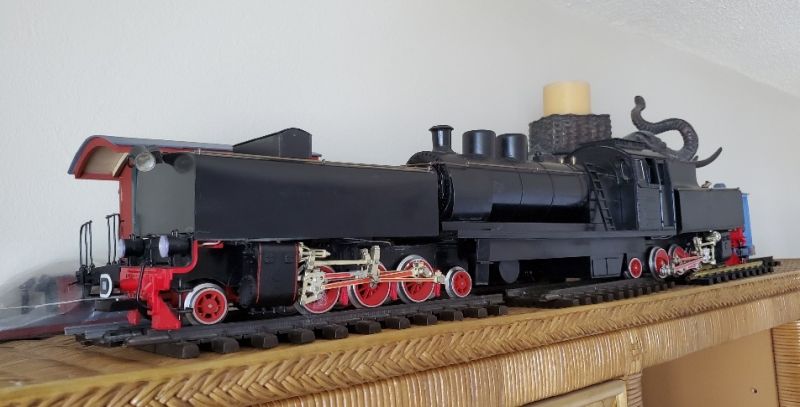We just returned from a delayed 50th Anniversary trip to southern Africa, and as trains were involved I figured I would post the pics here for your entertainment.
After wandering around looking at wild animals (which look just the same as in the books and documentaries,) we got to Victoria Falls, where the railway & road bridge crosses the canyon just below the falls. This view is from the back lawn of the Victoria Falls Hotel. The clouds are the spray from the Falls.
The hotel is on the site of the railway workers barracks, in Zimbabwe (Rhodesia in colonial times.) The plan was to build from Cape Town to Cairo - they got to Dar Es Salaam, which is about 1,000 miles short, but still 5,000 miles from Cape Town.
First order of business was a cocktail trip on the railway from Livingstone, Zambia, to the bridge. The company, Bushtracks, had a compound with a few dead steam locos.
The track is ‘cape gauge’ or 3’ 6". so pretty much the same as our narrow gauge RRs. We came out of the compound and backed down the ‘mainline’ to the bridge - this is from the observation car at the rear.
When we stopped on the bridge, we were told the engine crew was quite friendly; imagine my surprise when I discovered we had a 2-6-2+2-6-2 Garrett working the train! 

It was tough to get far enough away from the beast to take a decent photo, but I did get to climb in the cab. The fireman offered to show me the fire, but I declined - it was hot enough onboard.
The crew invited anyone up to blow the whistle, so my wife and her buddies all had a go.
The following day we wandered along the road to the station, which was just behind the hotel, as I’d seen a few relics. There was another Garrett of the same class, which according to the websites was running a few years ago. I guess it is waiting for a new boiler.
Also in the station was/is a little tram with a small diesel for power, which can run down to the bridge from the Zimbabwe side.
In the Hotel courtyard is the original tram, powered by a couple of porters. It was used on a 2’ lightweight line to take guests down the the Falls.
























